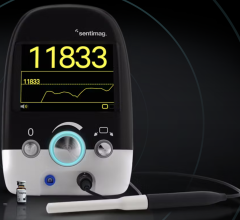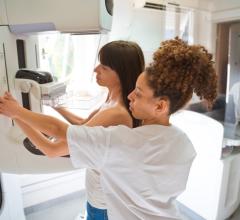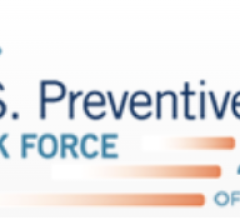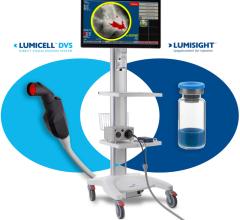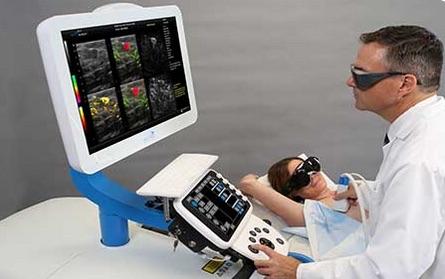
May 8, 2018 — The American Journal of Roentgenology recently published findings on statistical methods for downgrading the risk classification of breast masses to reduce the need for unnecessary breast biopsies. Clinicians from Seno Medical and medical center collaborators from The University of Texas co-authored the report.1
"The perceived risk of missing a breast cancer diagnosis with breast imaging studies is much higher than the risk of a false-positive diagnosis, leading to breast imagers recommending a breast biopsy whenever the risk of cancer is greater than 2 percent. Sometimes ancillary diagnostic breast imaging studies are performed to reduce risk to less than 2 percent, but it is difficult to know exactly how much risks are reduced even after a negative ancillary diagnostic imaging examination," said Thomas Stavros, M.D., chief medical officer of Seno Medical and a co-author of the report. "However, the use of the Negative Likelihood Ratio (NLR) along with BI-RADS [Breast Imaging-Reporting and Data System] 4 subcategories can help to reduce the number of false-positives without experiencing excessive negative results that would lead to cancer going undiagnosed."
The report explores the use of a statistical calculation known as the Negative Likelihood Ratio (NLR). It shows how NLR can be calculated from a diagnostic test's sensitivity and specificity and also show the NLRs of some currently available diagnostic imaging modalities. It outlines how the BI-RADS 4A sub-category has low enough and narrow enough range of pre-test probabilities (see Table 1) to allow downgrading to a post-test probability of 2 percent or less after a negative diagnostic imaging test with an adequately low NLR.
|
FINAL ASSESSMENT CATEGORIES |
|||
|
Category |
Management |
Likelihood of cancer |
|
|
0 |
Need Additional Imaging or Prior Examinations |
Recall for Additional Imaging and/or Await Prior Examinations |
n/a |
|
1 |
Negative |
Routine Screening |
Essentially 0% |
|
2 |
Benign |
Routing Screening |
Essentially 0% |
|
3 |
Probably Benign |
Short Interval Follow-up (6 month) or Continued |
>0% but < 2% |
|
4 |
Suspicious |
Tissue Diagnosis |
|
|
5 |
Highly Suggestive of Malignancy |
Tissue Diagnosis |
>95% |
|
6 |
Known Biopsy-Proven |
Surgical Excision when Clinically Appropriate |
n/a |
Table 1. BI-RADS Categories
Source: http://www.radiologyassistant.nl/data/bin/a53b4293920e94_TAB-Birads
"Reducing the number of unnecessary breast biopsies is an essential advancement toward improving women's healthcare and protecting breast health," said Pam Otto, M.D., Department of Radiology, The University of Texas Health Science Center at San Antonio and co-author. "I would encourage breast imagers to consider using BI-RADS 4 subcategories and NLR as important tools for helping them minimize false positive studies with minimum adverse effect on sensitivity, optimizing their patients' breast health. The availability of web-based programs for automating the NLR calculations should help to facilitate routine use of this important statistical tool."
For more information: www.ajronline.org
References
1. Yang WT, Parikh JR, Stavros AT, Otto P and Maislin G. Exploring the Negative Likelihood Ratio and How It Can Be Used to Minimize False-Positives in Breast Imaging. AJR 2018;210:301-306.


 May 06, 2024
May 06, 2024 



